Whale Watching in Sitka Sound
Aug. 30, 2008
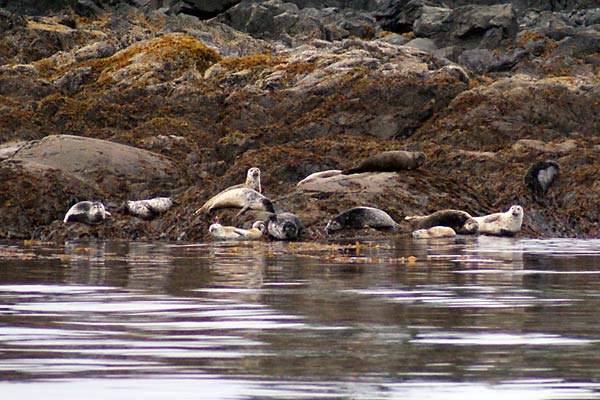
One morning while in Sitka, we took a boat trip into Sitka sound to
view marine wildlife. On the way out into the sound, the captain
spotted these harbor seals, so we went by them for a closer look. Every
time I have seen harbor seals, they are laying around sleeeping on the
rocks, like these guys. They must have a pretty lazy life.
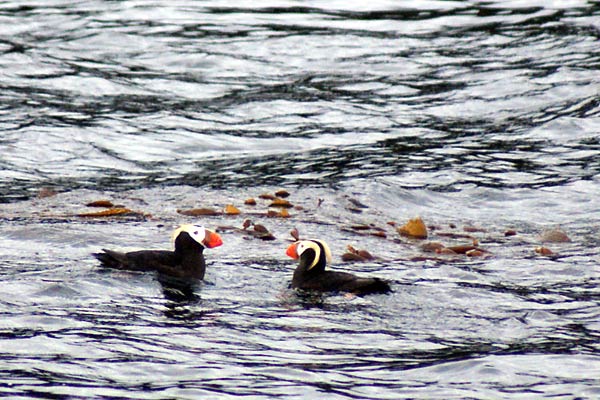
Puffins are funny, colorful looking sea birds.

Pufifns are excellent divers, but have trouble getting off the water
when flying. The one on the right is coming in for a landing.
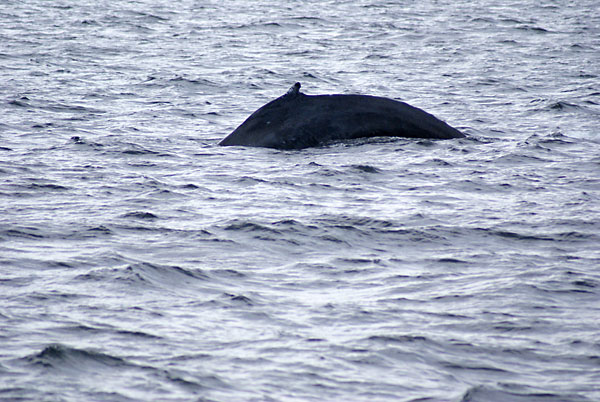
The captain found a group of about a dozen humpback whales that were
feeding near the surface, and occasionally diving deep. He turned off
the engine and we stayed there watching them for 15 to 20 minutes. This
is a whale in the process of diving deep; the head is down and going
deeper and the flukes, i.e. the tail, are still under the surface, but
about to come up.
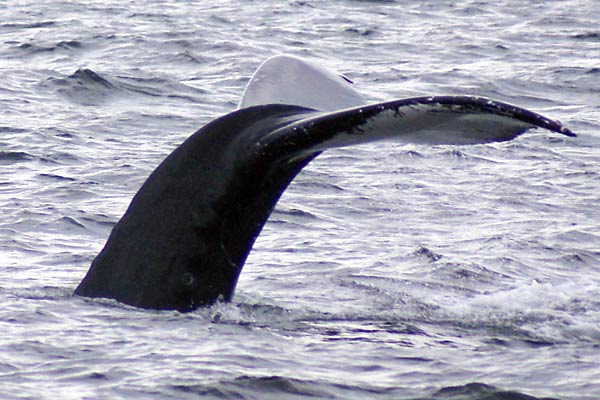
Now the tail has come up, showing the whale's flukes. When whales dive
deep, they usually stay down for quite a while. (I have heard numbers
from five to thirty minutes.)
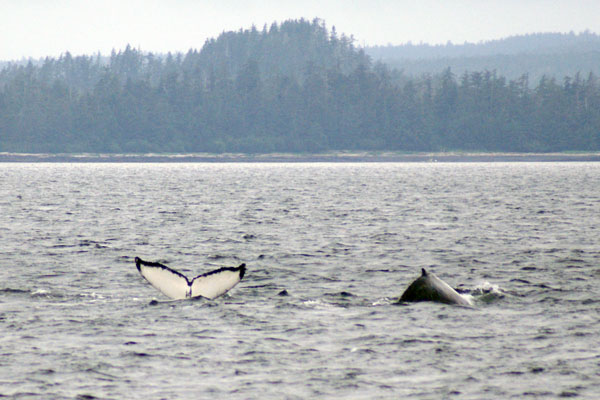
The underside of the flukes is white. We were told that marine
biologists use the markings on the tail to identify individual whales,
i.e. its name or number. It seems that, in this photo, I also caught a
second whale starting a dive.

Another whale in the process of diving. I'm not sure what is on the tips of the flukes.
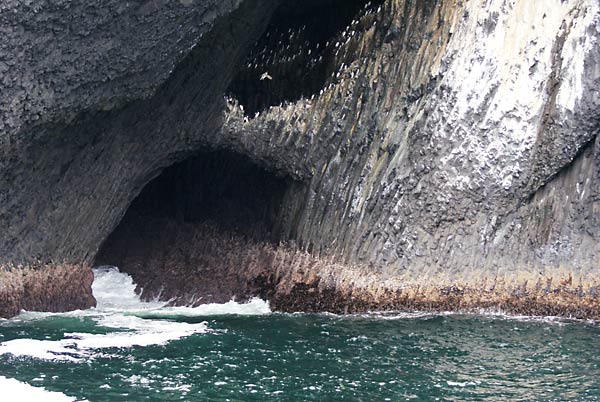
A sea cave with a colony of sea birds (we were told what they are, but I forgot - Nancy thinks they are common murres).
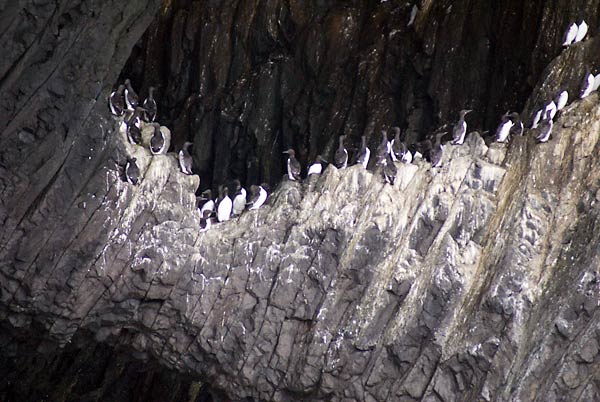
A closer look at the bird colony. Can't they find some place more
hospitable to live? This looks like a pretty rough neighborhood to me -
and rather crowded too.

On the way back to Sitka, the captain took us by an eagle's nest. A
juvenile eagle was home. They don't get their white heads until they
are five years old. At the Raptor Center we were told that you can tell
an eagle's age until he is five years old by the color of his feathers,
but after that there is no way to tell their age.









